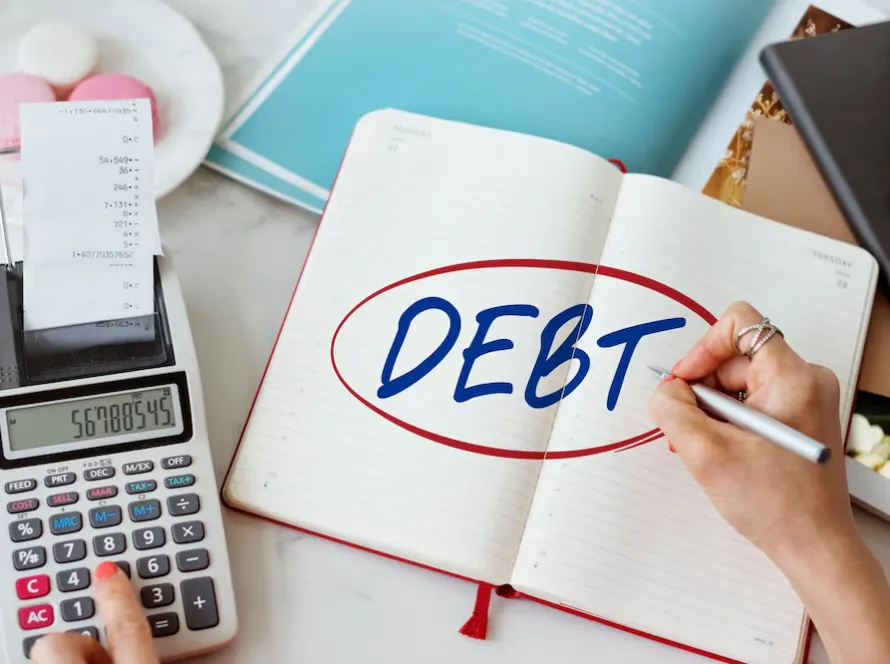Debt is often viewed with a negative connotation, but not all debt is created equal. Understanding the difference between good and bad debt is essential for making sound financial decisions. Whether you are an individual managing personal finances or a business navigating growth, distinguishing between good debt vs. bad debt can help you create a stable financial future. By leveraging good debt and avoiding bad debt, individuals and businesses can pave the way to financial growth. Let’s explore the distinction between beneficial and harmful debt, and how companies like SolvFree can assist in managing debt effectively.
What is Good Debt?
Good debt refers to borrowing that can improve your financial well-being or generate long-term value. It is typically associated with investments in assets or opportunities that will appreciate over time or provide returns. Good debt vs. bad debt isn’t just about whether you owe money, but rather how the borrowed money works for you in the long run.
Examples of Good Debt:
- Education Loans: Borrowing money to fund higher education can lead to better job opportunities and higher income potential over time. This is a perfect example of good debt investment strategies as it lays the foundation for future financial growth.
- Home Loans: Purchasing property, whether a house or an apartment, can often lead to asset appreciation over time, making it a worthwhile investment. A mortgage, though a form of debt, allows you to own an asset that may increase in value.
- Business Loans: Taking out a loan to start or expand a business can drive growth, increase profitability, and turn the debt into an asset. A loan that helps build an income-generating enterprise is an example of leveraging good debt investment strategies.
Why Good Debt is Beneficial:
- Creates future wealth or income: By borrowing to invest in appreciating assets or opportunities, you can build long-term wealth.
- Helps build credit history: When managed responsibly, good debt can help improve your credit score, making it easier to secure loans in the future at better rates.
- Lower interest rates: Good debt usually comes with lower interest rates, especially when compared to other forms of debt like credit card balances or payday loans.
What is Bad Debt?
On the other hand, bad debt refers to borrowing that doesn’t provide significant long-term value or benefits. Bad debts are often linked to depreciating assets or unnecessary spending. When you borrow money for things that lose value over time, it becomes harder to repay and achieve financial stability.
Examples of Bad Debt:
- Credit Card Debt: Using credit cards for non-essential purchases that can’t be paid off immediately results in high-interest charges and growing debt. This type of bad debt doesn’t lead to any future financial gain.
- Payday Loans: These short-term loans are notorious for their sky-high interest rates and fees, creating a cycle of unmanageable debt that’s difficult to escape.
- Personal Loans for Luxury Items: Borrowing money for items like expensive gadgets, vacations, or designer clothes can lead to financial strain since these items lose value quickly and don’t generate income.
Why Bad Debt is Harmful:
- High-interest payments: Bad debt often results in high-interest payments that don’t contribute to your financial growth.
- Harmful to credit scores: Failing to repay bad debt on time can negatively affect your credit score, making it harder to secure good loans in the future.
- Financial stress: Unmanageable debt can create stress, harm your mental well-being, and prevent you from achieving your financial goals.
How to Differentiate Good Debt from Bad Debt
To understand the difference between good and bad debt, it’s important to consider these key factors:
- Purpose of Borrowing: Evaluate whether the debt will help achieve long-term financial goals or if it’s simply for temporary satisfaction. Good debt should always serve a greater purpose like investing in education, property, or business growth.
- Potential for Returns: Consider whether the borrowed money will contribute to appreciating assets or future income. Good debt is often linked to investments that will increase in value over time.
- Cost of Borrowing: Assess interest rates, repayment terms, and other associated costs. Good debt generally comes with lower interest rates, making it more affordable and less burdensome.
- Impact on Financial Health: Reflect on how the debt will impact your overall financial situation. If taking on debt leaves you financially stressed or unable to meet other financial obligations, it may be categorized as bad debt.
How SolvFree Can Help
Managing debt is never easy, and understanding the nuances of good debt vs. bad debt can be overwhelming. SolvFree provides expert guidance to help individuals and businesses manage debt effectively. They offer debt relief services tailored to your unique needs, ensuring that you’re making the right financial decisions.
SolvFree’s Debt Solutions:
- Debt Assessment: SolvFree evaluates your financial situation and identifies both good and bad debts. They help prioritize and manage your liabilities based on your specific circumstances.
- Debt Settlement Opportunities: SolvFree negotiates with creditors to reduce the burden of bad debt, making repayment more manageable and allowing you to get back on track financially.
- Financial Education: By providing resources and expert advice, SolvFree helps clients make informed borrowing decisions, teaching you how to differentiate good debt vs. bad debt.
- Customized Debt Relief Plans: SolvFree offers personalized strategies to address your debt issues and create a clear path toward financial recovery.
Final Thoughts
Understanding the difference between good and bad debt is a cornerstone of financial literacy. While good debt can be a tool for growth, bad debt can hinder your financial progress. By identifying and managing these types of debts effectively, individuals and businesses can achieve greater financial stability. SolvFree is here to guide you every step of the way, helping you turn your debt challenges into opportunities for a brighter financial future. Whether you’re navigating the complexities of personal or business debt, expert guidance can help you thrive. Embrace good debt vs. bad debt strategies today and set yourself up for success in the future.
Incorporating these strategies will not only ensure that your debt works for you but also help you achieve financial growth over time. With SolvFree’s support, you’ll be empowered to make informed financial decisions and avoid the traps of bad debt.



